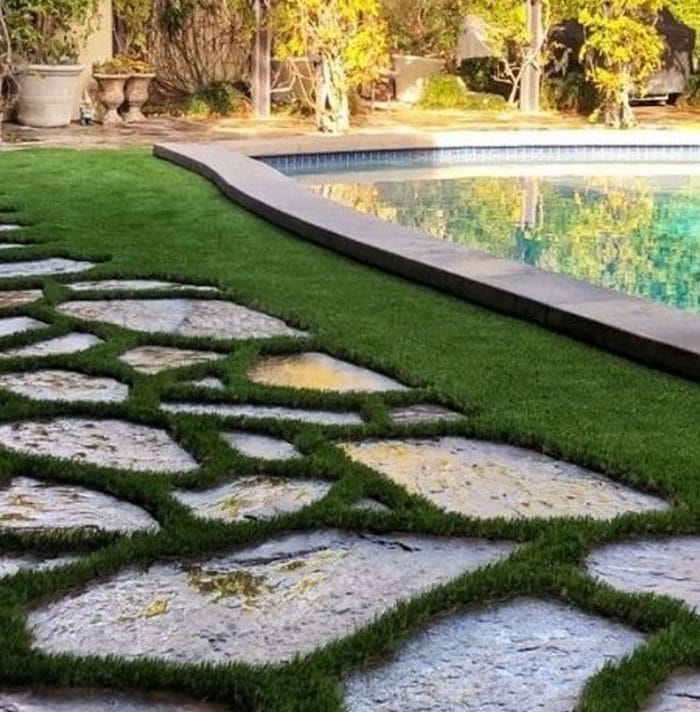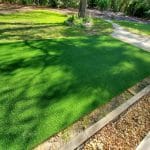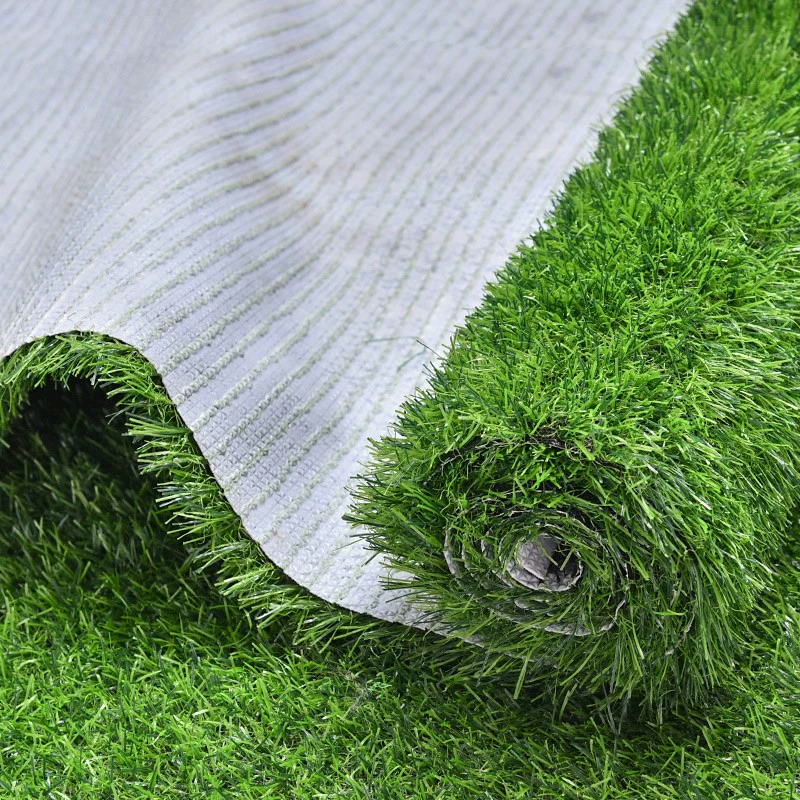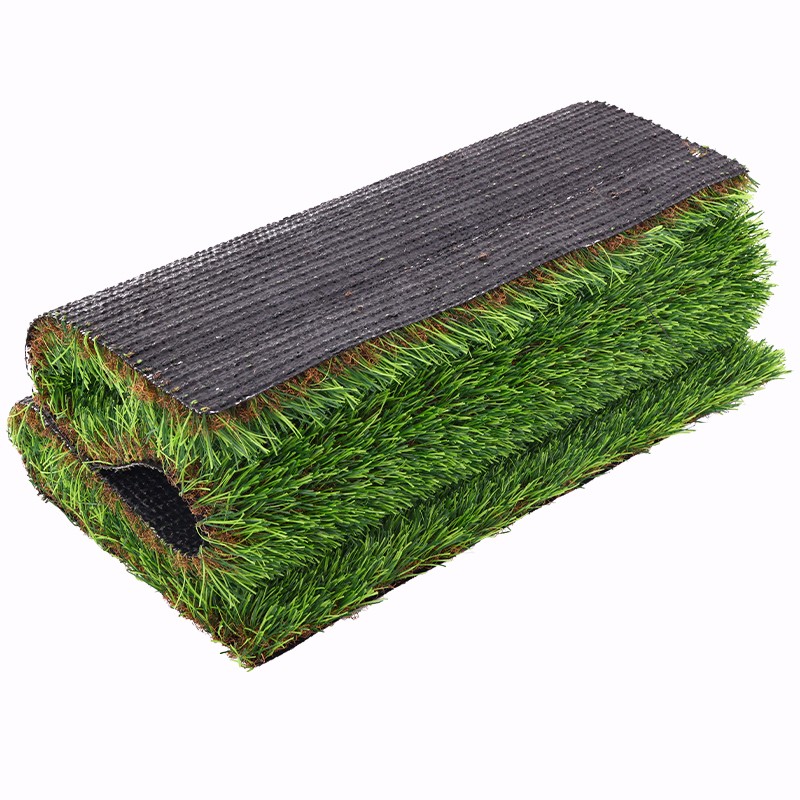Artificial grass between flagstone is a popular choice for homeowners and businesses who want a low-maintenance and stylish outdoor space. It is also a good option for areas that are difficult to grow real grass, such as shady spots or high-traffic areas.
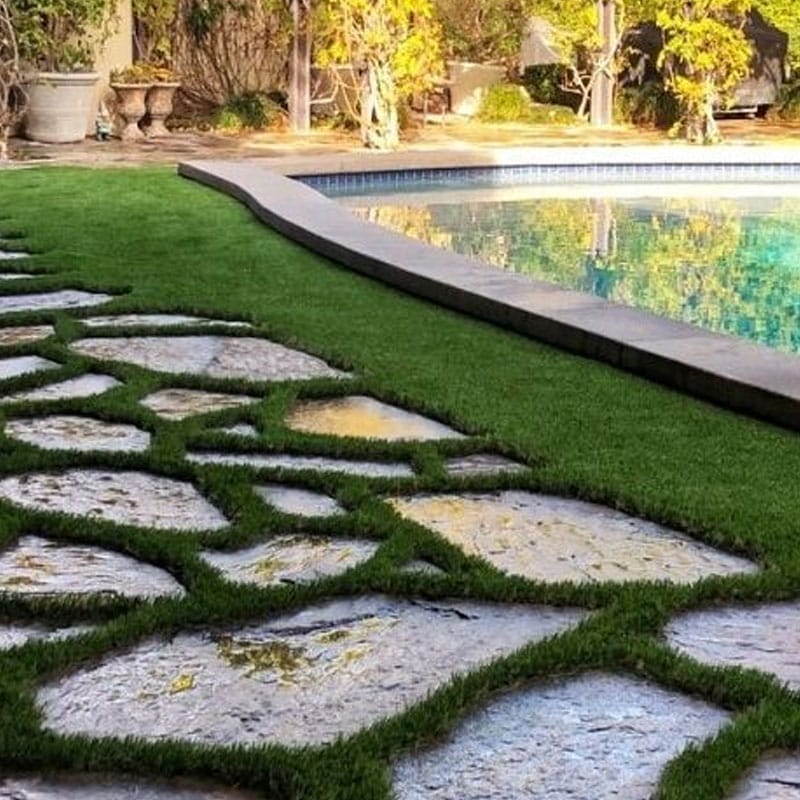
Here’s how you can install artificial grass between flagstone:
Materials and Tools You’ll Need:
- Artificial grass.
- Flagstone or natural stone pavers.
- Gravel or crushed stone (for the base).
- Landscape fabric (weed barrier).
- Edging material (optional).
- Sand (for filling gaps between stones).
- Adhesive (specifically designed for artificial grass).
- Utility knife or carpet knife.
- Broom or brush.
- Tamper or plate compactor.
- Stiff broom or brush.
- Tape measure.
- Protective gloves.
Installation Steps:
- Plan and Measure: Determine the layout of your flagstone pathway or patio. Measure the area where you want to install the artificial grass between the stones. Ensure that the stones are properly laid out and leveled.
- Prepare the Base: Excavate the area between the stones to a depth of about 2-3 inches. Fill this area with a layer of gravel or crushed stone, then compact it with a tamper or plate compactor to create a stable base.
- Lay Landscape Fabric: Lay down a layer of landscape fabric (weed barrier) over the compacted base. This helps prevent weeds from growing through the artificial grass and stabilizes the ground further.
- Install Edging (Optional): If you want to create a clean and defined border for the artificial grass, you can install edging material around the perimeter of the area between the stones.
- Cut and Lay the Artificial Grass: Roll out the artificial grass over the flagstone pathway or patio, ensuring it covers the prepared area. Use a tape measure and a utility knife to cut the grass to fit the space, leaving a small gap (about 1/4 inch) between the grass and the stones. Trim the edges neatly.
- Secure the Grass: Apply artificial grass adhesive to the edges of the artificial grass where it meets the stones and any seams. Press the grass firmly onto the adhesive to create a secure bond.
- Fill Gaps with Sand: Fill the gaps between the flagstone or pavers with sand. This helps secure the stones and provides a clean, finished look. Sweep excess sand away with a broom or brush.
- Brush and Fluff: Use a stiff broom or brush to “fluff up” the artificial grass fibers, making them stand upright and blend with the surrounding area. This step also helps to distribute the sand evenly between the stones.
- Finishing Touches: Check for any loose edges or areas that may need additional adhesive. Make any necessary adjustments, and your artificial grass between flagstone is ready.
- Prepare the area: Remove any dirt, debris, or weeds from the area where you will be installing the artificial grass. You may also need to level the ground.
- Install a weed barrier: Install a weed barrier under the artificial grass to prevent weeds from growing through.
- Cut the artificial grass to size: Cut the artificial grass to size so that it fits between the flagstones. Be sure to leave a small gap (about 1/4 inch) around the edges of the flagstones to allow for drainage.
- Secure the artificial grass: You can secure the artificial grass to the ground using nails, staples, or adhesive. If you are using nails or staples, be sure to drive them in at an angle so that they are not visible from the top. If you are using adhesive, be sure to use a type that is specifically designed for outdoor use.
- Brush in infill: Infill is a material that is brushed into the artificial grass to help it stand up straight and prevent weeds from growing through. You can purchase infill at most home improvement stores.
- Water the artificial grass: This will help to settle the infill and give the artificial grass a more natural look.
Here are some of the benefits of using artificial grass between flagstone:
- Low maintenance: Artificial grass does not require watering, mowing, or fertilizing. This makes it a great option for busy homeowners and businesses who don’t have a lot of time to spend on lawn care.
- Durable: Artificial grass is made from durable materials that can withstand all types of weather conditions. It is also resistant to pests and diseases.
- Versatile: Artificial grass can be used in a variety of ways. It can be used to create walkways, patios, decks, and play areas. It can also be used to fill in gaps between flagstone or other paving materials.
- Aesthetically pleasing: Artificial grass looks and feels like real grass, but it is much easier to maintain. It can add a touch of greenery to any outdoor space and make it more inviting.
By following these tips, you can install a beautiful and low-maintenance artificial grass lawn between your flagstone.


